Toyota Celica Stories
Toyota Celica 1600GT vs. Mitsubishi Colt Galant GTO MR (1970)
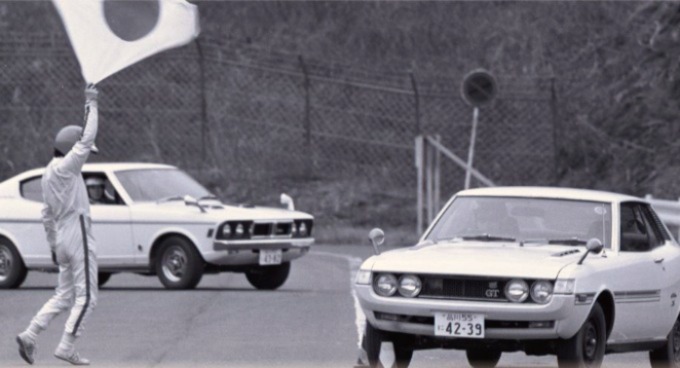
Publication: Motor Fan
Format: Group Test
Date: November 1970
Author: Yutaka Kazato, Hiroshi Okazaki, Toshimasa Sugawara, Motor Fan Editorial Staff (uncredited)
At Fuji Speedway, racing driver Hiroshi Kazato, car commentator Hiroshi Okazaki, and Toshimasa Sugawara, president of Racing Management Co. Ltd.–now also known as the “Motor Fan Fresh Trio”–gathered to drive the latest 1.6-liter DOHC specialty cars. The two cars on offer were the Mitsubishi Galant GTO and the Toyota Celica 1600GT.
Toyota Celica 1600GT (1971)
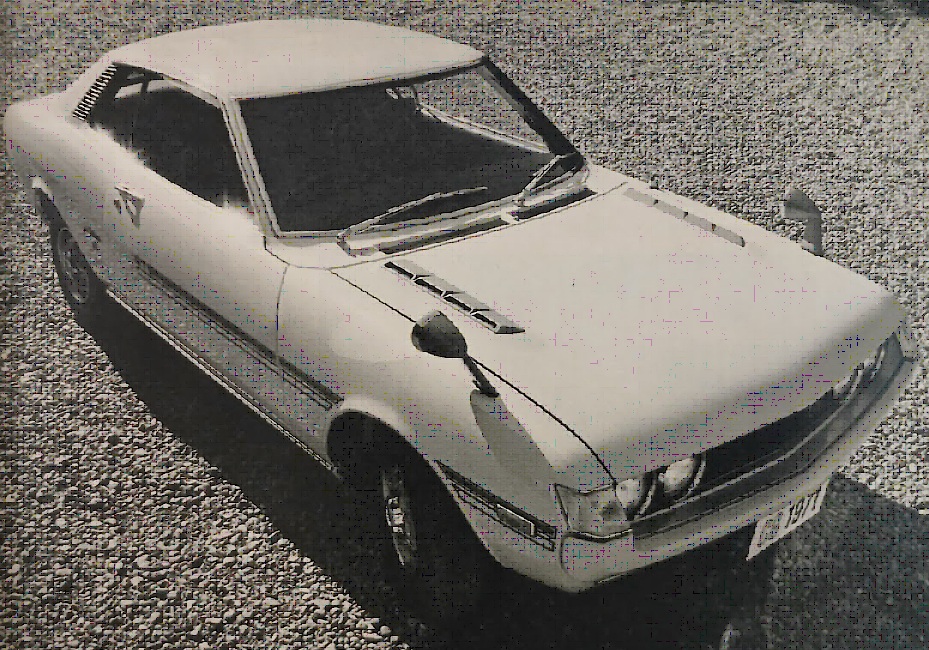
Publication: Car Graphic
Format: Road Impressions
Date: January 1971
Author: “C/G Test Group” (uncredited)
Road testing the Toyota Celica 1600GT
The day after testing Toyota’s new Carina 1600ST, I had the opportunity to drive the Celica GT for just three hours, so I’ll share my impressions while keeping them brief. The Celica is a sporty two-door hardtop that shares its floorpan, suspension, and powertrain with the Carina. The aim is to enable users to create a semi-customized vehicle—starting with a long-nose, short-deck bodyshell, a Japanese version of the so-called “specialty car” that became a hit in the US with the Mustang and in Europe with the Capri—with a choice of four exterior options, four engines, and nine interior options, all of which are computer-calculated and delivered within a short lead time, according to a Toyota PR spokesperson. In addition to the three engines shared with the Carina, the Celica also offers a GT model with a unique DOHC 1588cc 115ps engine and 5-speed gearbox.
Toyota Celica 1600GT and Toyota Carina 1600ST (1971)
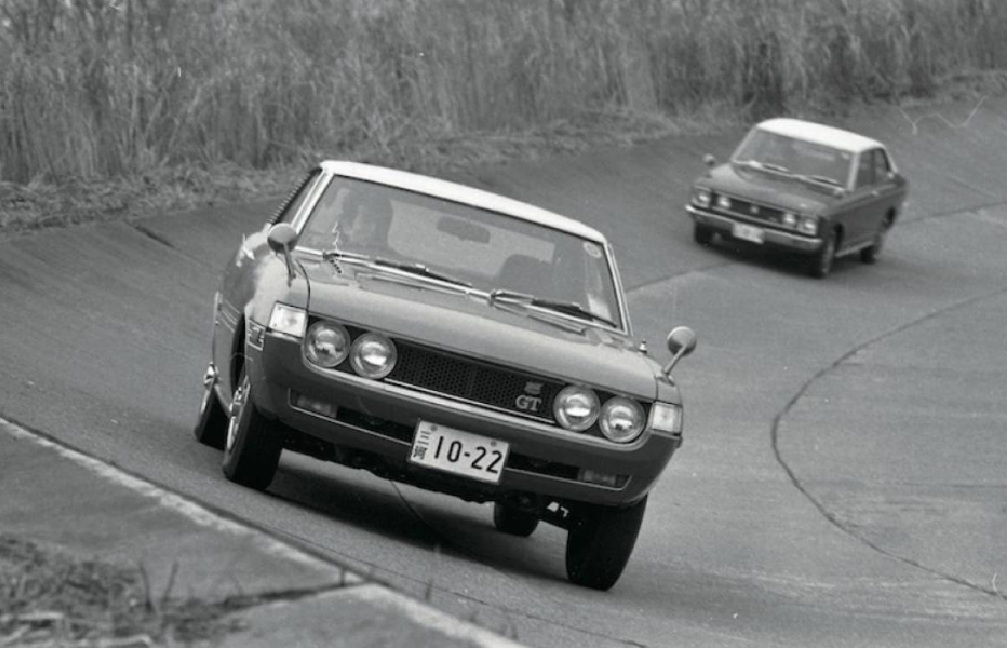
Publication: Motor Fan
Format: Road Test
Date: March 1971
Author: Katsuhiko Nishida, Kenji Higuchi, Yasuhei Koguchi, Hiroshi Okazaki, Atsushi Watari, Akira Miyagawa, Kiyoshi Matsumura, Kunitaka Furitani, Masahide Sano, Hiroshi Hoshijima, Tadashi Nishiyama, Katsumi Kageyama, Yasushi Saito, Kenzaburo Ishikawa, Akio Numazawa, Toshihide Hirata, Kiyoki Higuchi, Motor Fan Editorial Department (uncredited)
The Aim is To Put People First
Magazine: First, please tell us about the development goals and outline of the Carina and Celica.
Toyota Celica 1600GT vs. Mitsubishi Colt Galant GTO MR (1971)
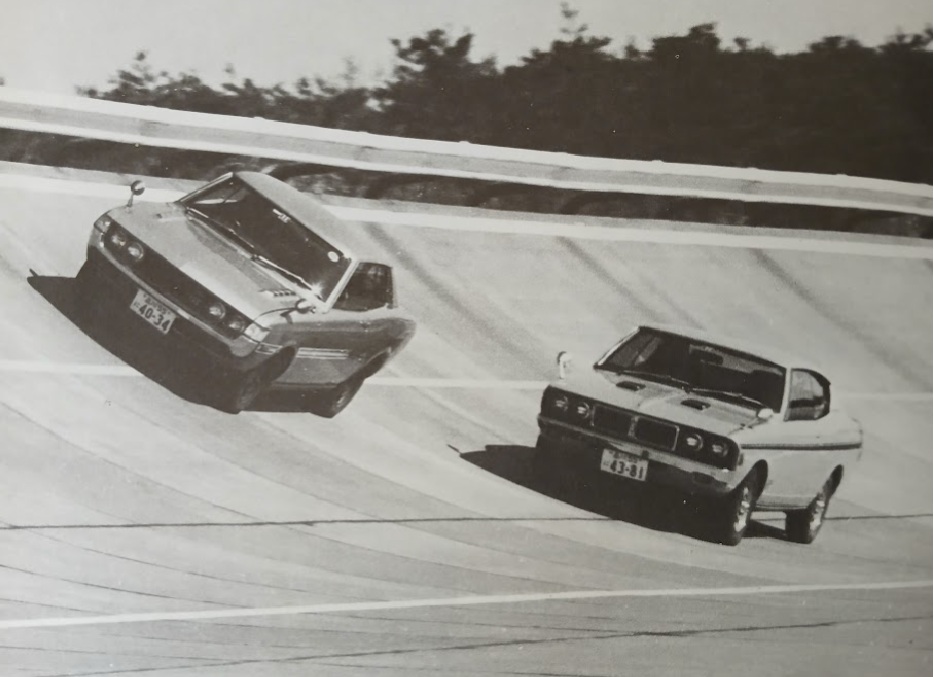
Publication: Car Graphic
Format: Group Test
Date: April 1971
Author: “C/G Test Group” (Shotaro Kobayashi, uncredited)
Comparison test: Toyota Celica GT vs. Mitsubishi Galant GTO MR
Mitsubishi’s Galant GTO MR and Toyota’s Celica GT are very similar in both specifications and character, and are five-seater sports coupes that appeared at roughly the same time, targeting the same market. Both are equipped with 1.6-liter DOHC engines and 5-speed gearboxes, and there is almost no difference between them in terms of external dimensions or weight. Structurally, both cars are very orthodox, with a monocoque hardtop body based on the chassis of a mass-market sedan (the GTO is based on the Galant AI/AII, the Celica on the Carina). Both have a conventional layout with MacPherson strut front suspensions and rigid axles at the rear, but the rear suspensions differ in design; the GTO series is leaf-sprung, and only the most powerful MR model has a torque rod added, while the Celica’s is suspended by coil springs, with four longitudinal links and lateral location via a Panhard rod.
Toyota Celica 1600GTV vs. Nissan Bluebird U 1600SSS-E (1972)
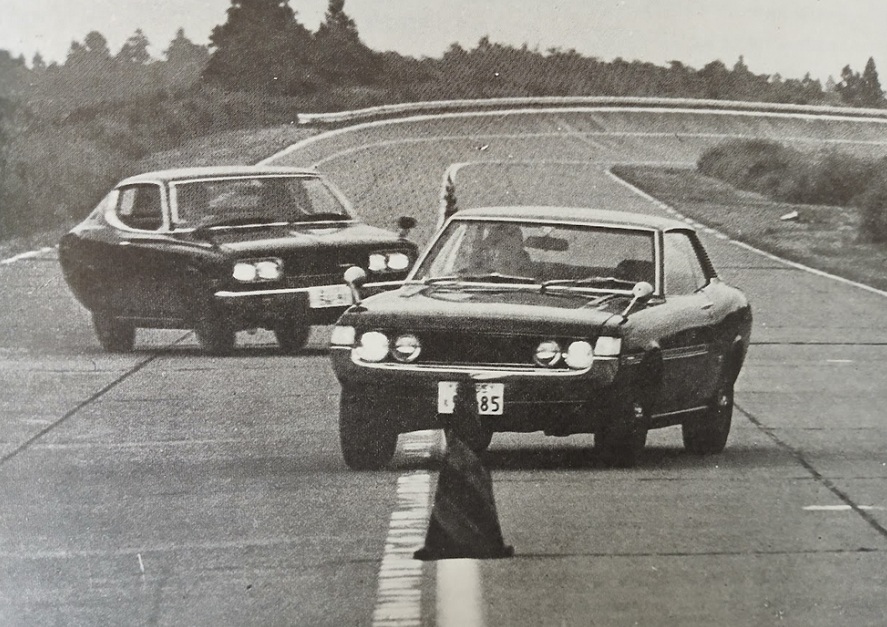
Publication: Car Graphic
Format: Group Test
Date: November 1972
Author: “C/G Test Group” (uncredited)
Comparison Test: Toyota Celica 1600GTV vs. Nissan Bluebird U 1600SSS-E
The Celica GT and the Bluebird U 1600 SSS compete in the same segment in terms of character and price class, and noteworthy variations aimed at enthusiasts have recently been added to both series, namely the Celica GTV and Bluebird U Hardtop 1600 SSS-E featured in this comparison test. Both are equipped with 115ps engines and 5-speed gearboxes, though the Bluebird’s hardtop body is slightly larger and weighs about 60kg more. Naturally, the Celica GTV is equipped with the same DOHC 1588cc engine and two Mikuni Solex 40PHH twin-choke carburetors as the GT, while the Bluebird U 1600 SSS-E is equipped with the same Bosch electronic fuel injection unit as its big brother, the 1800 SSS-E. As mentioned, both cars have a maximum output of 115ps, but the power peak is 6400rpm for the Celica and 6200rpm for the Bluebird, and the engines’ maximum torque figures are 14.5kgm/5200 and 14.6kgm/4400rpm, respectively, so it can be said that the DOHC Celica is the higher-revving car.